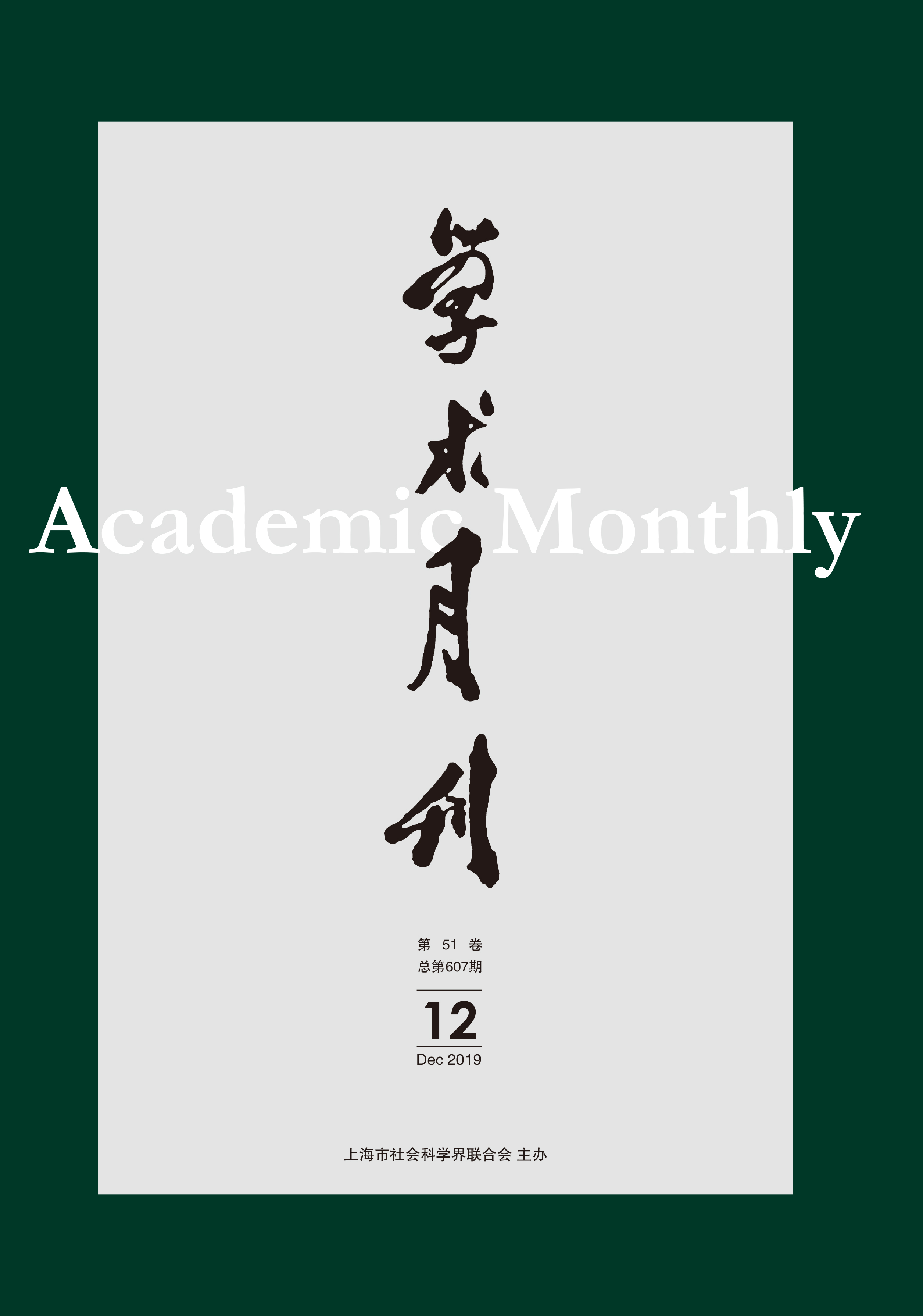Citation:
Zhongliang QIN. Re−examination of the Character Theory of Provincial in Hebei[J]. Academic Monthly, 2019, 51(12): 159-168.

Re−examination of the Character Theory of Provincial in Hebei
-
Abstract
Hengzhou’s unique geographical location and the status of foster son of Li Baochen’s Xi chieftain make many generals gather in Chengde Province, and then form a general group that can dominate the political trend of Fanzhen Province. However, after Li Baochen completely seized power, he began to replace military generals with close relatives, and even destroyed the general group by killing, until three years after the founding of Jianzhong (782), when Li Weiyue died in the Guild Hall and the general group tended to end. The historian’s own political experience and the purpose of governing history make Shi Chengzhong exaggerate the image of Wei Bo’s rebellion intentionally or unintentionally. In fact, Wei Bo’s Forbidden Army experienced the evolution from the pro-guard army to the non-pro-guard army, until the era of Yue Yanzhen’s reign in Wei Bo, the Yibing (“牙兵”) could truly dominate the fate of Fanzhen. The Chengde General Group, which began in the period of the reign of Zhide, developed before the semi-secessionist era of Heshuo Fanzhen, and it was the end of Tang Dynasty that Wei Bo’s forbidden army really became the representative of Fanzhen’s character. There was no time overlap between them, and they never lived in the same era. After Changqing, the three Provinces of Heshuo gradually diverged in the power structure of Fanzhen, and the festival of Chengde Province strengthened the control over the power of Fanzhen; Youzhou Province played a leading role as a general of the forbidden army; Weibo Province gradually took power and controlled the fate of Fanzhen.
-

-
References
-
Access
-
-
[1]
Zhongliang QIN
. Marriage Network and Power Game: On the Marriage between Royal Family and Heshuo Provincial in Tang Dynasty. Academic Monthly,
2021, 53(10): 194-204.
-
[2]
. . Academic Monthly,
2016, 48(05): 110-120.
-
[3]
An CHANG
. “Interior” and “Exterior” of the Text of the Chinese Constitution. Academic Monthly,
2020, 52(12): 79-96.
-
[4]
. . Academic Monthly,
2016, 48(11): 43-48.
-
[5]
Yiwei SONG
. The Textual Circulation and Symbolic Meaning of “ying-te-na-xiong-nai-er”. Academic Monthly,
2021, 53(6): 205-216.
-
[6]
Lin QI
. The Path of Technology-oriented and the Construction of Art Theory. Academic Monthly,
2021, 53(7): 151-160.
-
[7]
Lei LI
. The Power Competition and Ethnic Construction in Korean Peninsula between Han and Wei Dynasty. Academic Monthly,
2020, 52(5): 153-162.
-
[8]
Xue SONG
. The Construction of the Modern Chinese Concept of Weixin (Reform). Academic Monthly,
2020, 52(3): 121-131.
-
[9]
,
. . Academic Monthly,
2016, 48(03): 176-184.
-
[10]
Jie HU
. Individual Narrative and Collective Memory: Sociological Construction of Oral History. Academic Monthly,
2021, 53(11): 140-146.
-
[11]
Zhonghua GUO
, Yikun CHEN
. Geographical Imaginations in the Process of Chinese Modern State-Building. Academic Monthly,
2021, 53(9): 203-216.
-
[12]
Zhijun LI
. Methods Used by Monks to Build Holy Resorts in the Central Plaints: Spatial Analysis of the Formation of Manjusri Meso in Wutai Mountain in the early Tang Dynasty. Academic Monthly,
2021, 53(9): 187-202.
-
[13]
Fan NAN
. Literature: Conceptual Construction and the Vicissitudes of Entertainment Themes. Academic Monthly,
2021, 53(1): 150-160.
-
[14]
Zhen WU
. On the Systematical Construction of Yangming’s Liangzhi Theory. Academic Monthly,
2021, 53(1): 11-22.
-
[15]
Zhixiang JIAN
, Rong MA
. Language, Construction of Nation-state, and Language Policy. Academic Monthly,
2022, 54(9): 123-147.
-
[16]
Xiaoling SUN
. Moral Disagreements and Constructivism’s Conception of Practical Reason. Academic Monthly,
2022, 54(11): 30-37, 83.
-
[17]
YU Nanping
. The Great Power Competition in the Context of Carbon Governance Power. Academic Monthly,
2023, 55(8): 93-105.
-
[18]
. . Academic Monthly,
2017, 49(10): 81-92.
-
[19]
. . Academic Monthly,
2017, 49(11): 58-89.
-
[20]
Bohai CHEN
. Searching a Way in Constructing Contemporary Chinese Discourse in Literary Theory. Academic Monthly,
2020, 52(2): 142-147.
-
-



 沪公网安备 31010102003103号
沪公网安备 31010102003103号 DownLoad:
DownLoad: